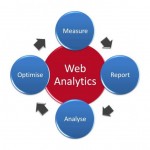
In a recent post we talked about using web analytics to generate more business and we’ve also talked about the value of web analytics to any small business’ website, because it isolates information you can use to increase your conversions rates, among other things.
Because web analytics is something we cover in our Digital Business Course, we’re not going to spend much more time on that here, but we do want to talk about a great new tool that you can use in-conjunction with web analytics: the web optimization software, Optimizely.
Testing Out Different People’s Responses
Web optimization, or A/B split testing, acts almost like a focus group where, without being told, a small number of customers will be diverted to a slightly different version of a web page and their behaviour compared with that of the users on the standard site. If the updated version of the web page results in more clicks, longer visits or more purchases, the updated version will displace the original; if the new version is inferior it will be phased out with very few people ever seeing it.
Web optimization has long been the open secret of high-stakes web development companies, like Google, but Optimizely’s foray into the marketplace makes it possible for small businesses to have the same data and insights available to them as a big businesses — and cheaply.
While Optimizely — which was founded in 2010 by Dan Siroker and Pete Koomen, who were both product managers at Google — may be used by a number of big players like MTV, Disney and Sales Force, it’s most useful for time-strapped small business owners, where making changes to web content has always been a time-consuming process.
If you have been using web analytics and made adjustments to your web content in response to data you’ve received from your analytics software, then you know how tedious the process can be — but importantly you know how much guesswork is involved in making changes to some elements of your web pages, like copy, for instance.
Are Folks Subscribing to Your Newsletter?
If you’re not using web analytics (and you should be!) it goes something like this: you notice users are landing on a particular web page in response to searching at particular keyword, but they don’t choose to sign-up to your newsletter. Why?
You guess that maybe there’s too much copy and it’s overwhelming the user so you decide to reduce it. You check your analytics — still no joy. Now what? Do you undo those changes and try something else? Or keep those changes and try something else? What if that still doesn’t work? Then what? Also, how long is a piece of string?
Eliminating the Guesswork
Optimizely eliminates all of that guesswork and for as little as $17 a month, it’s a lot cheaper than retaining the services of a web developer to provide this information just once, never mind for an entire year.
Optimizely is another tool small businesses can use to increase their productivity and increase their sales. If creating web content that’s efficient and highly targeted to your customers is a priority for your business, we recommend you give Optimizely a try.
***
If your business is about to make the transition online, you can find more information on our digital business course here, or by subscribing to our blog.












